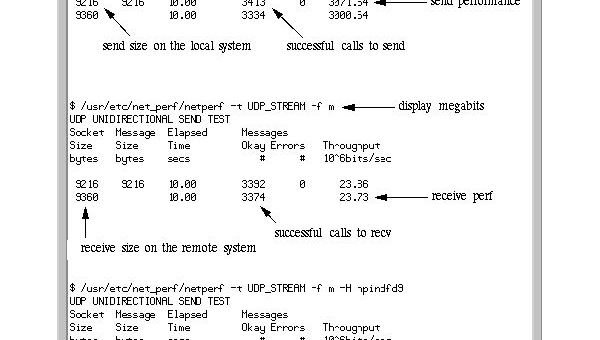消息队列在分布式系统中非常重要,能够有效解耦系统的各个模块,提供异步处理能力和缓冲能力。redis作为一个高性能的内存数据库,除了缓存和持久化存储,它还能充当轻量级的消息队列。使用redis处理消息队列有助于提高系统的吞吐量和可扩展性。
一、使用场景
消息队列的应用场景非常广泛,包括:
- 异步任务处理:如发送邮件、短信、推送通知等耗时操作,可以通过消息队列异步执行,提升用户体验。
- 系统解耦:将生产者与消费者解耦,使得两个系统无需直接通信,互相独立。
- 流量削峰:在高并发场景下,通过消息队列对请求进行排队处理,缓解系统的压力峰值。
- 日志处理:可以将日志消息推送到队列中,集中处理和存储。
二、原理解析
redis提供了几种不同的机制来实现消息队列,包括list和pub/sub。
1. 基于list的消息队列
redis的list数据结构是实现队列的基础。常见的操作包括:
lpush:将消息推入队列的左端。rpush:将消息推入队列的右端。rpop:从队列的右端弹出消息(相当于先进先出,即fifo)。blpop:阻塞式弹出消息,当队列为空时会等待直到有新的消息。
2. 基于pub/sub的发布订阅
redis的**发布/订阅(pub/sub)**是一种不同的消息队列实现方式,支持消息广播。它的机制如下:
- 发布者发布消息到一个频道(channel)。
- 所有订阅了该频道的消费者都能接收到消息。
但pub/sub的特点是消息不持久化,它更适用于实时消息传递,如果没有订阅者,消息会丢失。
三、实现过程
1. 项目结构
我们的项目基于spring boot ,包括以下模块:
- producer:消息生产者,用于将任务或消息推入队列。
- consumer:消息消费者,负责从队列中读取任务并处理。
2. 环境准备
在pom.xml中添加redis和web的依赖:
org.springframework.boot spring-boot-starter-data-redis org.springframework.boot spring-boot-starter-web
在application.yml中配置redis:
spring:
redis:
host: localhost
port: 6379
3. redis配置类
配置redistemplate用于与redis进行交互:
@configuration
public class redisconfig {
@bean
public redistemplate redistemplate(redisconnectionfactory redisconnectionfactory) {
redistemplate template = new redistemplate<>();
template.setconnectionfactory(redisconnectionfactory);
return template;
}
}
4. 基于list的消息队列实现
producer(消息生产者)
生产者将消息推入队列中,使用lpush或rpush操作:
@service
public class messageproducer {
@autowired
private redistemplate redistemplate;
private static final string message_queue = "message:queue";
public void produce(string message) {
redistemplate.opsforlist().leftpush(message_queue, message);
}
}
consumer(消息消费者)
消费者从队列中阻塞式地弹出消息,并进行处理:
@service
public class messageconsumer {
@autowired
private redistemplate redistemplate;
private static final string message_queue = "message:queue";
@scheduled(fixedrate = 5000) // 每5秒检查一次队列
public void consume() {
string message = (string) redistemplate.opsforlist().rightpop(message_queue);
if (message != null) {
system.out.println("consumed message: " + message);
// 模拟处理消息
}
}
}
通过@scheduled注解,消费者可以定期从redis队列中拉取消息进行处理。
5. 基于pub/sub的消息队列实现
producer(发布者)
发布者将消息发布到指定频道:
@service
public class pubsubproducer {
@autowired
private redistemplate redistemplate;
public void publishmessage(string channel, string message) {
redistemplate.convertandsend(channel, message);
}
}
consumer(订阅者)
订阅者监听频道的消息并处理:
@service
public class pubsubconsumer implements messagelistener {
@override
public void onmessage(message message, byte[] pattern) {
system.out.println("received message: " + new string(message.getbody()));
}
}
redis配置订阅监听器
配置订阅器并注册频道:
@configuration
public class redispubsubconfig {
@bean
public messagelisteneradapter messagelistener() {
return new messagelisteneradapter(new pubsubconsumer());
}
@bean
public redismessagelistenercontainer rediscontainer(redisconnectionfactory connectionfactory,
messagelisteneradapter listeneradapter) {
redismessagelistenercontainer container = new redismessagelistenercontainer();
container.setconnectionfactory(connectionfactory);
container.addmessagelistener(listeneradapter, new patterntopic("pubsub:channel"));
return container;
}
}
6. controller层
为生产者提供api接口:
@restcontroller
@requestmapping("/queue")
public class queuecontroller {
@autowired
private messageproducer messageproducer;
@autowired
private pubsubproducer pubsubproducer;
// 将消息放入队列
@postmapping("/produce")
public responseentity producemessage(@requestparam string message) {
messageproducer.produce(message);
return responseentity.ok("message produced");
}
// 发布消息
@postmapping("/publish")
public responseentity publishmessage(@requestparam string message) {
pubsubproducer.publishmessage("pubsub:channel", message);
return responseentity.ok("message published");
}
}
四、测试效果
基于list的消息队列:
- 启动spring boot应用后,通过api接口发送消息:
- post请求:
/queue/produce - 参数:
message=helloqueue
- post请求:
- 消费者将在每次调度时从队列中取出消息并打印。
- 启动spring boot应用后,通过api接口发送消息:
基于pub/sub的消息队列:
- 发布消息:
- post请求:
/queue/publish - 参数:
message=hellopubsub
- post请求:
- 订阅者将立即收到消息并处理。
- 发布消息:
五、总结与优化
redis虽然不是专门的消息队列工具,但在轻量级、实时性要求高的场景下非常适合使用。通过list实现简单的任务队列,通过pub/sub可以实现消息广播。生产环境中,建议使用如下优化措施:
- 消息持久化:确保重要消息不丢失,可以结合rdb/aof机制。
- 队列监控与报警:监控队列长度、处理延迟等指标,防止队列积压。
- 高可用与容灾:考虑使用redis集群以保证高可用性。
到此这篇关于基于redis实现消息队列的示例代码的文章就介绍到这了,更多相关redis 消息队列内容请搜索代码网以前的文章或继续浏览下面的相关文章希望大家以后多多支持代码网!






